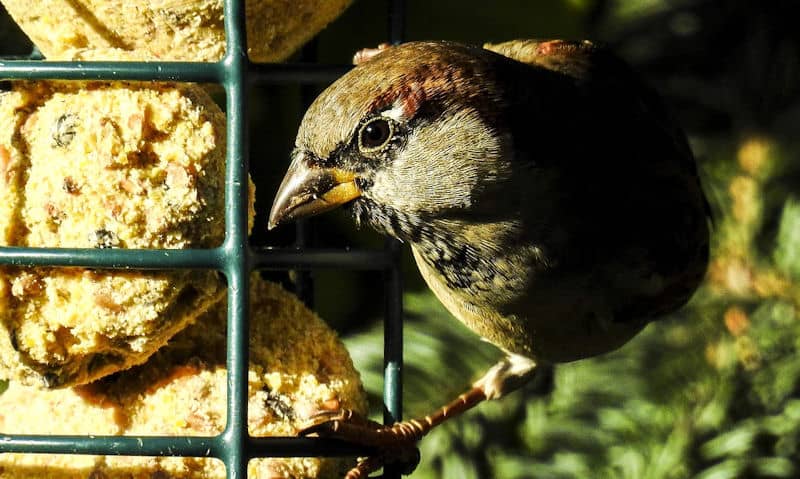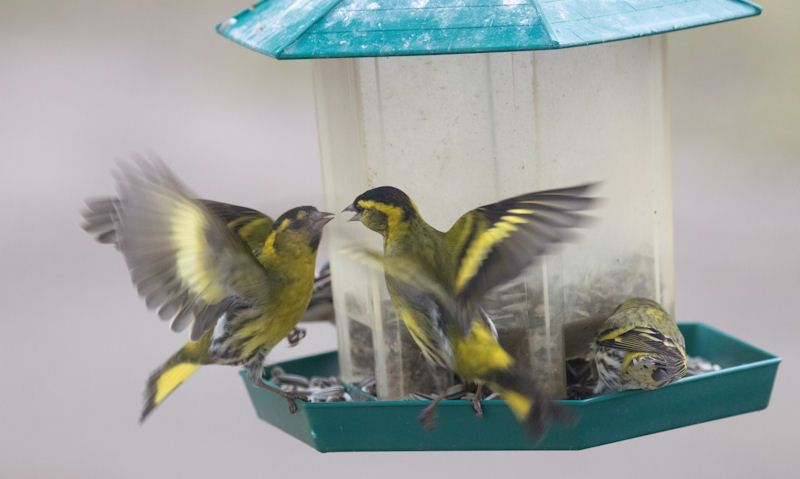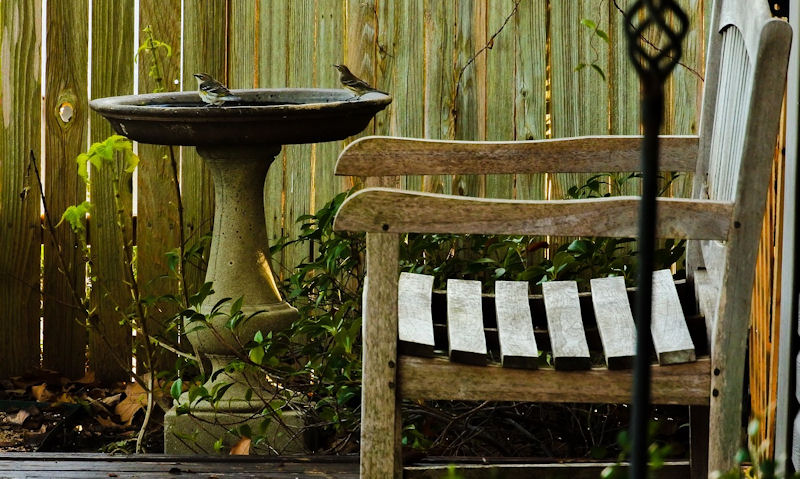Where to hang suet feeder
Exciting as it is too attract wild birds to feed, extra care would need to be taken with suet, as its made in animal fat after all, so can attract unwanted guests.
Where to hang a suet feeder safely would be on a spare bracket on the bird feeding station or a wall bracket. To be successful you'd need to locate the suet feeder with other food sources, as to not be hard to find. If its at all possible, hang suet feeders up on a tree branch or adjust a hedgerow branch if need be.
Where ever you decide to hang the suet feeder, make sure its in a safe place that will keep the feeding birds out of harms way.
Suet is an attractive prospect to foxes, cats or other pets as its made in animal fat, so up high and out of the way is sure to keep wild birds safe.
Garden birds that are likely to feed on the suet feeders are Blue Tits, Long Tailed Tits, Sparrows and the Great Spotted Woodpecker - but that doesn't apply to me.
To allow any species to feed in their own unique manner, make sure there's space.
So remove obstructions that could deter them away or disrupt their line of sight; birds like to escape quickly so need to see the environment around them.
Position a hanging suet block feeder off the bird feeding station, bird table or make use of a flower pot bracket.
What is best for wild birds is a tree to hang the feeder or a hedgerow that is high enough for the suet feeder to hang.
Near assorted bird feeders
If at all possible with other bird feeders setup in the garden, I highly recommend you situate the suet feeder near to them.
To isolate a feeder of any kind will make it more difficult to locate, so to position it where birds no best, would be the most effective solution.
Where to hang suet feeder first and foremost would be up on the bird feeding station.
Regular visitors to the garden will come to known its location so to place a suet feeder elsewhere could see it being ignored.
However noisy or aggressive they can be, wild birds love to feed in numbers, as it feels safer.
Its very unlikely to see a lone bird feeding in the corner all by its own, so it would be rare to see a separate feeding location in the garden.
If you want to you can hang the suet feeder near the bird feeding station by only a feet or two, but never too far away.
No isolating Suet feeder
Isolating a suet feeder, much as any type of bird feeder in the garden is sure to be ignored, feeders are more effective when they are grouped.
Birds feel the need to feed in a frenzy in one location; numbers equal safety and there's no safeguard in place with an isolated suet feeder.
In positioning the suet near to say the peanuts or seeds, the wild birds can hop over to one or the other, until they find one to eat off.
In placing a suet feeder in isolation it might only be the sort of bird species that are not to fond of suet or fat balls, thus its a wasted opportunity.
To position a suet feeder on its own will certainly reduce the possibility of it being used.
And I'll mention it again, it can be quite difficult to see a bird feeder being used when its just the one.
To deal with that you could go the extra mile by using multiple suet feeders in a single location, such as the bird feeding station or off a tree branch.
Only if NO obstruction
Going through the trouble of finding the perfect spot to hang your suet feeder in the garden should not in no way be obstructed by garden items.
What I mean is wild birds who use suet feeders tend to be the larger Great Spotted Woodpecker or the smaller Tits or Sparrows.
So for the Woodpecker they like to hang off the bottom of the suet feeder so they need to be able to freely hang, with a clearing of at least 4 feet below it.
Small common garden birds who are likely to feed on the suet like their space too; so make sure there's no furniture, washing or other obstructions in their line of sight.
You to can become an obstacle, so make sure as to not interfere too much as it will scare them off all to frequently.
Site a hanging suet bird feeder in the middle of the garden or near to a hedgerow on the feeding station - technically speaking the natural environment is not an obstruction to wild birds, but moreso welcoming.
And so I recommend the hedgerows, trees or a protruding branch to hang a suet feeder.
Insert in natural environment
Unfortunately, its not something that can apply to a heck of a lot of people, as not everyone can be so lucky.
But if you are lucky to have a mature tree or one that is growing in your garden, then there won't be a better place to hang up the suet blocks or balls.
It doesn't have to be a tree in full bloom but only a small, bony tree with a nicely positioned branch to hang the feeder off - so it can't be too delicate.
If you have too you can hang the suet feeder deeper into the tree centre; that way the birds can use the branches to hop over.
If you do wish to feed say the Great Spotted Woodpecker then be sure to allow space under the feeder, to allow them to hang.
What else might be suitable is a series of branches or perhaps a more flimsy twig that protrudes out of the hedgerow.
And if there isn't one but you feel it would be a safe environment, there will be no harm in pulling at a branch until it creates a natural, yet safe bracket for the feeder.
Not accessible to predators
Safety should be a priority when setting up a suet bird feeder, as the meat fat used to produce suet balls or blocks can attract unwanted visitors.
Visitors of whom can be predators to small garden birds or the rarer woodpeckers.
If its within reach you can expect a cat to try it out or moreso if its a fox that is the regular visitor to your garden - so if they can reach it, so can they be within reach of wild birds.
Setting up a suet feeder that is not on a wall bracket or hanging off a bird feeding station can lead to all sorts of complications.
For example hanging the suet off a branch could mean its lower to the ground then what is considered safe.
Be sure to hang the suet in a tree if giving the opportunity, but understand if cats or other predators don't visit now - they could in due course climb up the tree to access feeders.
Where you could never locate suet in a feeder is on the ground if you fail to hang it up. In doing so will not only deter feeding birds, but then it becomes attractive to larger, nuisance birds such as crows.
Where to hang suet feeders summary
Its any wonder you wish to know where to hang suet feeders because as you may know, not only is fat content good for wild birds, but it can attract all species.
To setup a suet feeding never do so in a location that is isolated, thus hard to find but in doing so will deter wild birds due to other food sources.
If you have a bird feeding station setup then find a space for it; if you have a wall bracket then replace the basket with the feeder.
Set up the suet feeder in an open area as to allow fragile, yet agile small birds to come and go freely - the larger Great Spotted Woodpecker needs room to hang.
That is especially true if you are making use of a squirrel proof suet feeder surround.
Best thing you can do is hang suet feeders in a natural environment, so free of feeding stations or brackets.
Trees are quite possibly the best place to hang a bird feeder of any kind, so do make use of it if you have any type of tree in your garden.
If not make use of a hedgerow even if its mean you have to adjust a branch or two too allow a heavy feeder to hang.
In the end you will want the suet feeder up high and out of the way of predators; suet is made from animal fat so its an attractive food source to all wild life.


